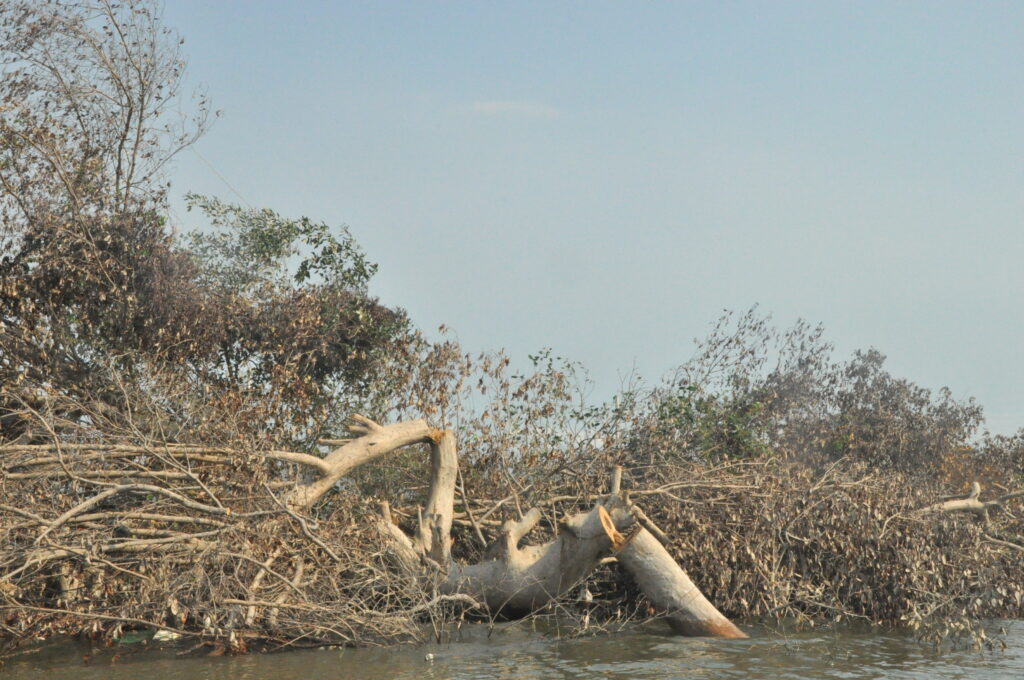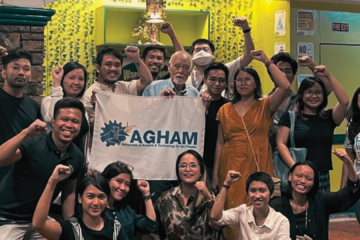
The recent NAIA lockdown reflects the worsening sorry state of our country’s ineffective, neglected, and derelict transport system. In spite of the deafening clamor for an efficient and reliable transport system that fulfills even the most basic social and economic needs of Filipinos, the government offers half-hearted and band-aid solutions to our transportation woes. The glaring incompetence shown by government in addressing our transportation woes has paved the way for the entry of profit-hungry vultures, masquerading as vital solutions, that cause more damage to the people in general.
Business tycoon Ramon Ang of San Miguel Corporation has milked the recent man-made NAIA disaster for his masterful stroke in providing pseudo-relief: he now comes as a savior to suffering airline passengers through the development of his P700-billion aerotropolis, an unsolicited proposal, in Bulakan, Bulacan. This 2,500-hectare airport and metropolis is planned to be built north of Manila Bay through reclamation and promises to accommodate 100-200 million passengers annually.
Based on the rapid resource mapping conducted by AGHAM-Advocates of Science and Technology for the People and Center for Environmental Concerns-Philippines at the proposed aerotropolis site, the project’s social, economic and environmental costs put coastal and surrounding ecosystems, as well as food security, in peril.
According to the study, there are 22 mangrove species in the area will be cleared to pave way for the project. In fact, the clearing operations has begun in April 2018, cutting down 600, mostly the sturdy Avicennia officinalis which serve as natural wave barriers and home to marine organisms. At least 700 families, mostly fisherfolks from 7 sitios, will be directly affected and most likely displaced. The reclamation will cover the 24-hectare fishing reservation in the area, disrupting seafood production. Bulakan, together with 4 other coastal municipalities, contributed 41 million tonnes annually of the province’s fish production, a main source of fish for nearby cities such as Metro Manila.

Gateway to flooding, environmental destruction
Ang argues that the aerotropolis will solve multiple issues plaguing the metro, in terms of transportation, and in Bulacan, in terms of flooding and its economy. He gives an unsolicited advice that it will decongest the traffic of the metro, especially air traffic as a new air transport hub is badly needed to support the expected increasing number of travels the country has to service in the coming years. Moreover, knowing that Bulacan is a flood prone area, he argues that the development of the aerotropolis, together with an integrated spillway system will allow flood relief in the area, especially as the supporting ecosystem surrounding the Angat and Ipo Dams have been greatly deforested. The deforestation of these areas decreases the capacity of the area to hold water, especially, if or when heavy rainfall occurs as a result of typhoon or monsoon rains. Our experience during typhoons Ondoy and Pedring can refute these claims as floodgates were not able to prevent the metro from drowning in floodwaters brought by Ondoy and storm surge brought by Pedring.
The arguments presented by Ang for the aerotropolis is baseless as these entails cutting down natural wave barriers such as mangroves in the area, which could lessen the impact of possible storm surges in the years to come. Artificial barriers have succumbed to the forces brought by the strong wave action from storm surges, which might also be true to the aerotropolis. So, when typhoons hit these areas, is it resilient enough to shield the inland areas from the impacts of storm surges?
What is the cost to taxpayer of this development, of this opportunism? Among coastal communities, this “development” being experienced by locals in Marawi, Boracay, and Haiyan-affected areas is a form of development aggression that places the greed of corporations over the needs of the people. It does not address the different effects of climate change, worse, it lessens the ability of the country to mitigate these effects.
Short-sighted solution
Current arguments presented by SMC in the development of an alternative airport hub is short-sighted and shallow. For them, this can be alleviated by using a multiple nuclei development approach, which tries to lessen the burden of a city center, as multiple nodes such as Central Business Districts (CBDs) will attract different populations, thus, diffusing the pressure from one area to another. But the current sorry state of our Philippine transport system, be it land, water, or air, is not merely a product of pressures from population density. More importantly, it stems from the lack of a system which answers the root cause of the issue, such as its decongestion.
The lack of a comprehensive plan for urban development is a major culprit of the problems faced by the transport system. This is further worsened by its free market nature as reflected by the MRT. The privatization of the MRT did not spell efficiency, stress-relief among commuters, and low-cost travel as promised by its proponents. What we actually have are the opposite of these- an inefficient transport system, stressful commute, and a very expensive mode of travel. We can still argue for the different expressways that cost individual taxpayers a lot as a result of the privatization of these social services.
Can we expect a different story from the SMC aerotropolis? It might be a stretch to think otherwise, as history has informed us that the lack of urban planning not only in city centers but also in urban regions opens itself to disaster capitalism and opportunism. It is not the people, or the number of people which has caused these problems, it is a system that failed to accommodate the needs of the people that further complicates their exploitation by capitalists such as Ramon Ang.
DOTr Secretary Arthur Tugade’s statement, “the more the merrier”, referring to multiple airports, reeks with arrogance and is a bare faced insult to the poor fisherfolks of Bulakan and reflects the lack of comprehensive planning behind these projects. No one would be merry if their homes and livelihood are about to be buried. It speaks of the neglect of the government for the people that it should serve.
Lasting solutions
From stranded passengers to displaced communities, flooding and disrupted food production; the NAIA disaster proves that it is not a mere problem of congestion. It is a complex issue that needs comprehensive solution, outweighing the negative impacts to the poorest of the poor.
Our current transportation woes can be rooted on the lack of development in the vast rural areas, coupled with unplanned urbanization. With very little opportunities for work, people are compelled to swell the cities to seek for opportunities that are lacking in their rural hometowns, including farmers with no land to till, or displaced fisherfolks due to reclamation. Development that is narrowly focused to urban centers, neglecting rural communities, will only worsen this scenario.
Rural development, in the framework of national industrialization is the key to resolving urban congestion with its ugly faces – worsening traffic, pollution and the likes. More than airport hubs and metropolis, what the people need in the vast countryside are land and support in harnessing and developing our rich agricultural lands, to reach its full economic potential that will feed not only the rural population but the country in general. It does not only solve transportation woes and urban congestion, but also the perennial food crisis that we face.
We should not fall for the trap of faux development promised by the likes of Ang. It is not development at all, but aggression which targets the poor, the oppressed and the marginalized. In assessing whether development is genuine, we just go back to two basic questions: Development for what? Development for whom? Will it benefit the vast majority, or will it only feed the insatiable greed of the few elites?#
Chuckie Calsado is a biology teacher in Philippine Science High School Main Campus, specializing in bioethics and environmental education. He is the former chair of AGHAM Advocates of Science and Technology for the People chapter in the said school and currently spearheads the People’s Science School Program for the fisherfolk community in Bulakan, Bulacan.

0 Comments